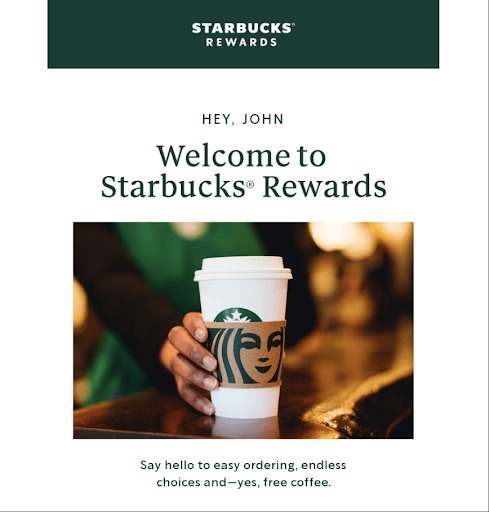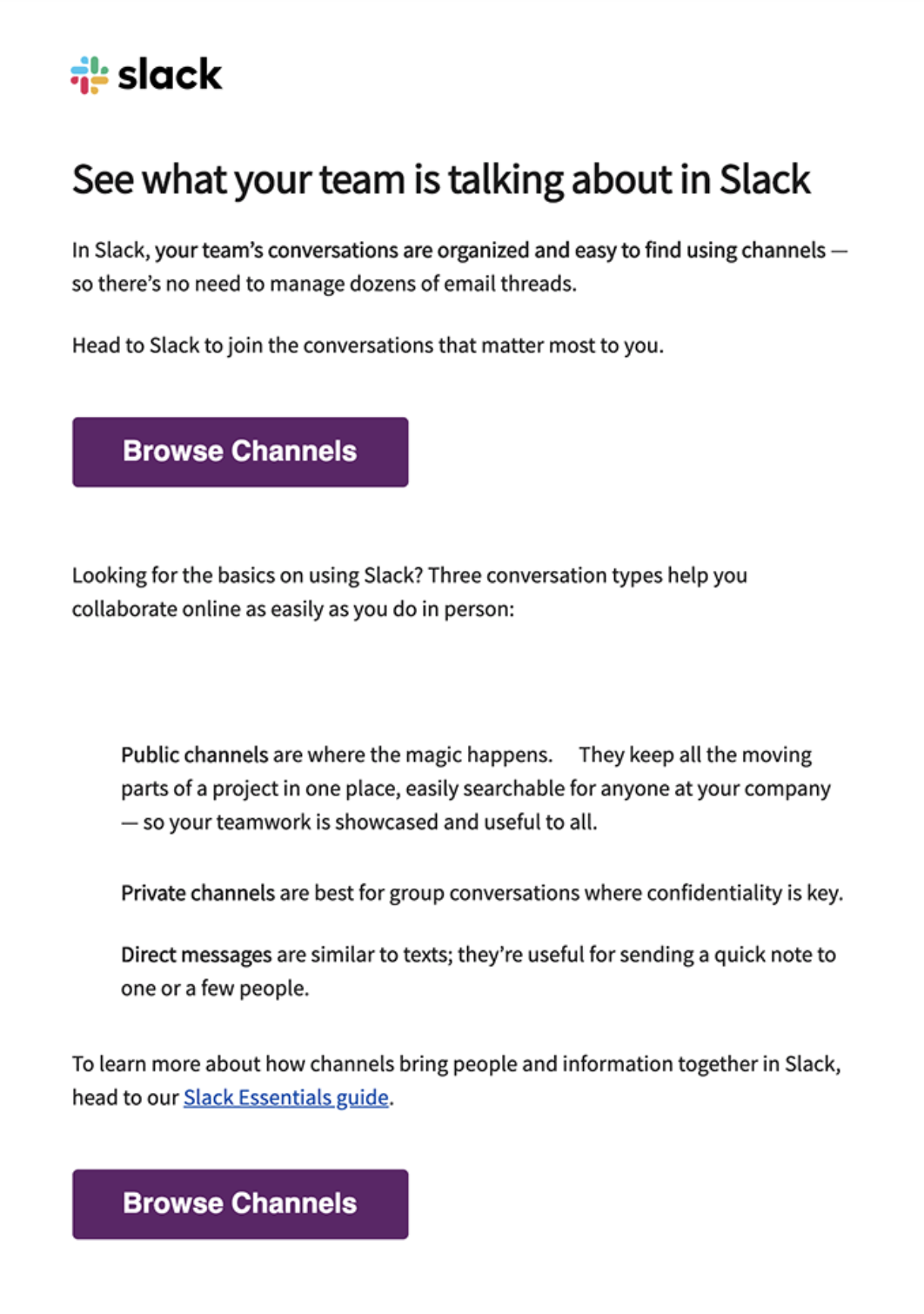
Have you ever received a welcome email that made you want to do business with a company? Or an onboarding email that sparked trust and confidence in a brand? That’s the power of email sequences.
An email sequence is an email marketing strategy that involves sending a series of targeted emails to subscribers according to a schedule. This strategy uses the power of email marketing automation to engage customers with relevant marketing messages.
Like other forms of email marketing, email sequences are a cost-effective way for businesses of all kinds to promote their products and services. By sending automated, personalized marketing messages to individual recipients on your email list, you can save time, boost sales, and increase customer engagement.
In this article, we’ll cover everything you need to know about email sequences. We’ll discuss the various types of email sequences and how to create and schedule sequences that perform well. We’ll also explore some common challenges and how to overcome them.
Types of email sequences
If you want to send email sequences, you need marketing automation software. Such a tool will allow you to set up email sequences of various kinds. Some will go out at specific times during a customer’s lifecycle journey with your company. Others will go out as a response to specific actions individual subscribers take.
Let’s take a closer look at some common types of email sequences.
Welcome email sequences
As their name implies, welcome sequences welcome brand-new additions to your email list to the world of your brand. They introduce your company and lay the groundwork for long-lasting relationships.
Businesses typically send the first email in a welcome sequence after a subscriber joins their email list. They use it to highlight the value their products or services offer the customers. This allows businesses to capitalize on the interest subscribers show in their brand when they first sign up for emails.
Considering welcome emails have an open rate of 50% and generate five times more clicks than email marketing campaigns, the opportunities for capitalizing on the initially high engagement are vast. Welcome emails also help with:
- Data collection: You can leverage the high engagement of welcome emails to collect valuable data. You can track replies, link clicks, and other metrics to get a clearer idea of your new subscribers. It will help you determine how to position your offerings and perfect your email list segmentation efforts. Email list segmentation is the process of dividing your subscribers into smaller groups based on their interests, demographics, and other personal data to send more targeted emails.
- Lead nurturing: Once you grab new leads’ interest with welcome emails, you can start converting them into paying customers. For example, you can provide lead magnets like product samples, free trials, and coupon codes to inspire action in new leads. In exchange, you can acquire more contact information to keep in touch.

Onboarding email sequences
Onboarding email sequences hit customer inboxes right after they’ve made a purchase, whether it’s their first or fifth time buying from you. They often provide tutorials for how to use a product or service or explain any next steps the customer might need to take.
You can use onboarding emails as another opportunity to engage your customers. For example, you can include links to your website or social media accounts and encourage them to visit and follow for further benefits.
Onboarding email sequences can improve customers’ perception of the value you offer. For example, you can provide convenient details like customer service or support contact information, making it easier for them to get help when they need it.
Renewal and abandoned cart email sequences
Renewal and abandoned cart emails are two types of email follow-up sequences. Renewal sequences remind customers to renew an expiring subscription or a service. Abandoned cart emails go out when an online shopper adds products to their digital shopping cart but doesn’t make a purchase. They remind customers of those products and encourage them to go back and complete the purchase.
Re-engagement email sequences
Re-engagement email sequences re-engage subscribers who used to be excited about a brand but whose interests have cooled. Examples include messages like “We miss you!” or “We haven’t seen you in a while.” They point out that a customer has begun pulling away and usually incentivize the customer to return by offering:
- Special discounts or coupon codes
- Personalized product recommendations
- Free or expedited shipping
Advanced email sequences: upsell, cross-sell, lead nurturing, and feedback sequences
Several advanced email sequence examples include:
- Upsell sequences attempt to get customers to upgrade an initial purchase.
- Cross-sell email sequences try to sell products based on a recent purchase.
- Lead nurturing emails attempt to convert potential customers into actual customers.
- Feedback email sequences are a way to check in with customers to see how they perceive your products or services.
Event-driven email sequences
Event-driven email sequences promote an event, whether in-person or virtual. They generally feature two separate types of emails:
- Pre-event emails promote an event, remind people it’s coming up, and help them get ready for it.
- Post-event emails ask for feedback on the event and/or sell a product, subscription, or service.
How to create and implement email sequences
The first step to creating email sequences is to decide on your desired goals. It will help you determine what types of sequences you need and how to design them.
To set yourself up for success, make your goals SMART, that is:
- Specific
- Measurable
- Achievable
- Realistic
- Timely
With your goals in mind, decide on your sequence triggers. With some sequences, the triggers are obvious. For example, abandoned cart emails should go out when a customer adds to their cart but doesn’t make a purchase.
However, you’ll need to determine a schedule for automating other sequences, such as re-engagement email sequences. How long will you wait to target inactive subscribers? Some businesses wait up to 90 days to send re-engagement messages to subscribers who have stopped opening emails.
That said, you might want to act sooner to target subscribers who have never opened one of your emails. If your subscriber list is heavy on inactive subscribers, you risk landing in a spam folder, which can tank your deliverability rate.
Optimize your email sequences with automated marketing software
Deciding how many emails each sequence should include and how to structure each sequence can be difficult if you’re new to the process. An automated email sequence software can help you make the best decisions when planning your sequences.
HubSpot and SendX are two examples. You can integrate them with your email list to set triggers and schedule sequences. The tools can also analyze customer data to help you craft messages tailored to individual subscribers and track the performance of your sequences.
If you’re looking for a comprehensive email marketing solution, check out Constant Contact. We offer best-in-class delivery rates of 97% and a range of tools for designing and implementing exceptional email sequences. For example, you can use our drag-and-drop editor and email sequence template library to craft compelling marketing emails. You can also rely on our tracking software to check your open rates, clicks, and shares.
Visit us today at Constant Contact to learn more about our online marketing solutions.
Best practices for email sequences
Here are some best practices for email marketing and email sequences to help you get the most out of your email sequences:
- Verify the subscriber data. Kick things off with a confirmation email to ensure you’ve collected the email addresses correctly.
- Send multiple emails. A welcome sequence should include four to six emails altogether. Use the first couple of emails to welcome subscribers and introduce your brand, company story, and team. In the following emails, focus on building interest in your products or services. Finally, the last emails in the welcome sequence are when you start trying to make a sale.
- Segment your subscribers. Start segmenting your subscribers right away based on their engagement level. It will allow you to send more targeted emails.
- Focus on a mobile-friendly experience. Design all your email sequences with mobile users in mind. Most subscribers will read your emails on their smartphones, and you want to make the experience seamless.
- Personalize your content. Personalization is essential in modern marketing, with 61% of consumers expecting it. Use your customer data to personalize sequences with relevant information and recommendations. For example, you can correlate your re-engagement email sequences with special occasions in your customers’ lives, like birthdays or anniversaries.
- Optimize subject lines: Email subject lines are one of the critical determining factors of whether people will open your emails or not. Make sure subject lines are engaging, enticing, and formatted correctly.
- Include a call to action (CTA). Calls-to-action tell your recipients exactly what you want them to do after reading your email. They could be anything from clickable buttons that redirect to product pages to instructions to claim a reward or discount. They are arguably the most important aspect of each email in your sequence, so make sure they’re relevant, clear, and easy to follow.
- Test the performance of your email sequences. Test your emails through A/B or similar testing techniques to discover the most effective tactics for boosting open rates and generating clicks.
- Follow up and keep an eye on unsubscribe rates. Some subscribers may miss your emails due to cluttered inboxes. Send a follow-up email to improve your chances of reaching leads. But don’t go overboard. Email fatigue is real, so track unsubscribe rates and scale back when necessary.
The benefits of email sequences
As a form of automated email marketing, email sequences help boost customer engagement by delivering personalized messages to your subscribers. Welcome sequences and onboarding sequences put your brand in the minds of people just learning about your company, while abandoned cart emails and renewal sequences help recapture the attention of existing or previous customers.
Automated email marketing also lets you schedule your emails in advance or according to predetermined triggers and send them automatically. This saves you time, lets you avoid sending mass emails manually, and increases the efficiency of the overall marketing department. With more free time available, your employees can focus on achieving and nurturing long-lasting customer relationships, directly impacting sales and revenue.

One real-world example of a successful email sequence is an onboarding email from Slack. This communications platform for businesses offers a quick overview of how the platform benefits workplaces, describes a few basic functions of the communications channels, and provides new users with links they can follow to explore channels. These quick tips and tools make it easy for new users to get acquainted with the service.
Email sequences challenges and solutions
Some common challenges you may encounter when using email sequences are:
- Emails caught in spam filters: The solution? Track your engagement rates, like opens and clicks, to stay on top of which subscribers are reading your emails and which aren’t. Keeping your subscribers list clean of inactive recipients can help you maintain a healthy sender score and keep your emails out of the spam folder.
- Incorrect customer information: Send confirmation emails when customers initially provide their email addresses to ensure you have the correct information.
- Email fatigue: Email Fatigue is a feeling of being overwhelmed by too many emails. Quite obviously, when subscribers are overwhelmed by your emails, they may be more likely to unsubscribe from your list. Paying attention to engagement metrics and adjusting your sequences so that you aren’t overwhelming subscribers can prevent burnout and keep unsubscribe rates low.
Frequently Asked Questions (FAQ)
Q: How do you structure an email sequence?
A: The structure of your email sequence will vary depending on the type of sequence you want to send. Typically, each email sequence will have a subject line, body content and a CTA. Follow the above best practices for building email sequences for more information.
Q: What is a follow-up email sequence?
A: A follow-up email sequence is a series of emails you send to check-in with your subscribers if they don’t respond or act on your previous emails.
Q: What is the difference between an email sequence and an email campaign?
A: An email sequence is a series of emails you design action triggers for to automatically send emails to subscribers who have completed or avoided taking a specified action. On the other hand, you schedule email campaigns for an entire/specific list of subscribers.
Automate email sequences and boost your business
Email sequences can bring a range of benefits to your business. They can drive higher subscriber engagement and positively impact sales in the long run. As long as you use the right automation tool and follow the best practices for email sequences, you can leverage these advantages without investing too much effort and resources.
Constant Contact can help you get the most out of your email sequences and email marketing. Check out our resources to learn more about digital marketing overall, or sign up to take advantage of our robust email marketing solutions.




